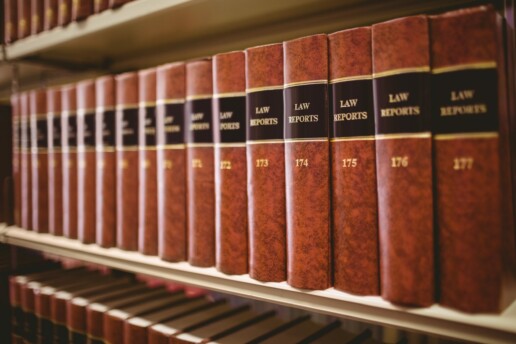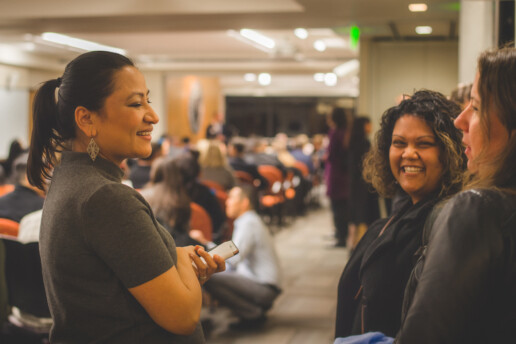Introducing the SELFS Study!

Meera E. Deo
LSSSE Director
The Honorable Vaino Spencer Professor of Law
Southwestern Law School
Administrators, scholars, and advocates agree that LSSSE is an invaluable tool for learning about law students. Our annual nationwide survey gathers data on the law student experience, covering everything from how much time students spend preparing for class to the quality and frequency of their interactions with others. For twenty years, our findings have focused solely on students, though similar national longitudinal data on the experiences of others key players in legal education also could be critically important.
That all changed this year.
What is the SELFS Study?
In 2024, LSSSE received a generous grant to significantly expand the scope of the project by creating and administering two new surveys: one gathering data from law faculty, the other from law school staff. The goal of the Survey on the Engagement of Law Faculty and Staff (SELFS) Study is to identify and address challenges and opportunities facing faculty and student-facing staff so we can collectively improve legal education. Due to the SELFS Study, individual law schools can use empirical data to better understand their own unique communities in order to foster a more inclusive campus climate. Additionally, researchers nationwide will for the first time be able to access aggregate interactive law school data from one source—including perspectives from students, faculty, and staff—to identify trends and best practices in legal education.
The SELFS survey questions focus on four key areas:
- Perceptions of contemporary issues in legal education;
- Opportunities for and experiences with professional development;
- Teaching methods, curricular decisions, and pedagogical approaches; and
- Engagement-related behaviors, including interactions with students.
When the two SELFS Study surveys are used in conjunction with the core LSSSE survey, the combined results provide a more holistic picture of legal education. This expansion benefits individual law schools drawing on school-specific data as well as those using aggregate data to enhance legal education nationwide.
Where Are We Now?
Twenty law schools participated in the SELFS Study in spring 2025—the maximum number envisioned for our pilot year of data collection. These twenty schools represent a diverse range of institutions across numerous metrics, including geography (all regions of the U.S.), ranking (elite through access-oriented schools), size (from fewer than 500 to over 1000 students at each institution), and affiliation (both public and private law schools). The survey was open at all participating law schools for roughly six weeks. After significant recruiting efforts during that time, the first SELFS survey administration closed earlier this month, boasting an impressive 60% overall response rate, including 60% (N = 521) for faculty and 61% (N = 444) for staff. This high level of participation is almost unheard of with full population sampling.
How Did We Get Here?
It has been an exciting and eventful year for LSSSE staff and our partners working on the SELFS Study! In spring 2024, we brought on two consultants. Jennifer Espinola, Associate Dean for Student Affairs and Law School Dean of Students at the University of Oregon School of Law, has been a vital member of the team with a primary focus on spearheading content for the staff survey and recruiting law schools and staff members to participate. Similarly, Indiana University-Bloomington Associate Research Scientist Allison BrckaLorenz has been indispensable—helping to draft the faculty survey instrument, facilitate data collection, recommend graduate student assistants, discuss data dissemination, and more. IU graduate students Ronald Davis and Steven Feldman have also gone above and beyond, completing every requested study-related mission with enthusiasm and expertise.
SELFS Co-Principal Investigators Chad Christensen, Meera E. Deo, and Jacquelyn Petzold lead the team and share responsibility for all aspects of the project. Initially, our tasks revolved around creating and testing both surveys, readying the online survey tool, drafting coding schemes for data analysis, and crafting a marketing and outreach plan. Next, we moved on to recruiting the twenty law schools that would comprise this first year of data collection—ensuring they maintained diverse representation across the various domains listed above. Once the deans of these twenty law schools were on board and had registered their institutions for the SELFS Study, we shifted our attention to recruiting faculty and staff at each school to participate. After all, without robust participation of individual faculty and staff, we have no data to share!
How did we convince 965 individuals to complete the SELFS surveys? We emailed our own personal faculty and staff contacts at each of the twenty participating law schools, urging them to send their own messages to colleagues to complete the survey. We worked with the dean at every school to maximize recruitment, suggesting they make announcements about the SELFS surveys at faculty and staff meetings, foster healthy competition between faculty and staff to participate, and otherwise find creative methods to achieve robust participation. When the survey closed on May 7, we were thrilled to see we had surpassed even our own lofty goals and managed a remarkable 60% response rate overall.
What’s Next?
Now that we have the data in hand, it’s time to clean it and then analyze it. Next, we will take those analyses and share them with others. We will disseminate school-specific data to each of the twenty participating law schools through individual reports during summer 2025. These reports will share responses for each of the questions on both the faculty and staff surveys, providing each institution with a broad picture of their overall law school community—and matching them with student analyses from the LSSSE Survey when appropriate. We also will begin making national aggregate data available to researchers and others who seek to better understand legal education, whether they want to insert our findings into their own scholarship or use our data to reach conclusions of their own. And we will begin sharing findings ourselves through presentations at national conferences and publications in law reviews and peer-review journals.
We will also make slight adjustments, as needed, to both SELFS survey instruments based on our initial administration. Because come fall 2025, the whole recruiting and survey administration process begins again for year two of the SELFS Study! We have schools lined up already and are open to more. Feel free to get in touch for more info about participating, using SELFS Survey data, or otherwise drawing from and supporting our work in legal education.
Meet Toby, My Classroom AI Chatbot
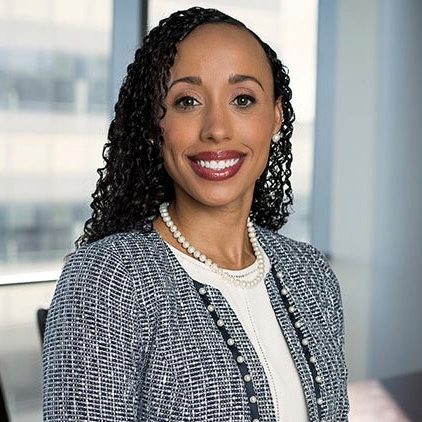
Renee Henson
Visiting Assistant Professor
University of Missouri School of Law
AI has the potential to revolutionize legal education, particularly in teaching students the practical skills they will need before entering the profession. Emphasis on practical skills has gained significant attention within law schools in recent history. The development of the NextGen Bar Exam is evidence of this increased attention. Negotiation, mediation, and arbitration are now crucial legal education components. Some schools are incorporating alternative dispute resolution skills into first-year courses to ensure students develop hands-on experience early in their legal education.
I teach a course called Lawyering: Problem-Solving and Dispute Resolution, which is designed to equip first-year law students with the essential skills for success in the legal field, including professionalism, communication, and alternative dispute resolution-related skills. Through multiple simulations, students gain firsthand experience in negotiations and mediations. The goal is to provide realistic exposure to the complexities of legal practice, allowing students to navigate real-time scenarios in a controlled environment.
AI offers additional opportunities for experiential learning in legal education. Findings from LSSSE reveal that a majority of students benefit from opportunities for educational and personal growth during law school, including solving complex real-world problems (58%), developing legal research skills (82%), acquiring work-related knowledge (63%), and thinking critically and analytically (88%).

These are fundamental skills for any lawyer, and AI can be used to enhance these abilities through interactive and dynamic simulations. By integrating AI-driven exercises into the classroom, we can create more engaging and immersive learning experiences that better prepare students for real-world legal challenges. Of course, practicing law is a complex balancing act. It may seem overwhelming to simulate the intricacies of legal negotiations using AI, but even small steps can yield significant benefits. That is where Toby, the AI Chatbot I created, comes in.
I built Toby, a customized application powered by OpenAI’s GPT model, to challenge my students to learn how to negotiate extemporaneously against a difficult opposing counsel. Toby is not just a chatbot. Rather, he is a relentless, high-pressure negotiator programmed to be obstinate, rude, and hostile during negotiations. I trained Toby using my own class materials, embedding key negotiation strategies such as identifying opening offers, recognizing bottom lines, and engaging in information bargaining. I also fine-tuned his responses to maintain realism and strategic depth, ensuring he would behave like a human negotiation opponent.
My students had the opportunity to negotiate with Toby to attempt to reach an agreement. Working in groups, they received confidential case information, while Toby was programmed with his own confidential details to ensure an adversarial dynamic. Students presented offers, and Toby responded in real-time, forcing them to think quickly, balance client interests, and navigate complex interactions. After extensive negotiations, the students successfully reached a settlement for their client. Regardless of the outcome, Toby provided representative experience of real-world legal practice.
The feedback from my students was overwhelmingly positive. They appreciated the chance to engage in dynamic, real-time negotiations, an experience that is difficult to replicate outside of real life practice. Toby’s ability to deliver a complex simulation, complete with tactical and emotional aspects, enhanced their understanding of negotiation strategies and the role of AI in legal practice. More importantly, students gained confidence in their ability to handle high-pressure negotiations, a skill that will serve them well in their careers.
While AI is not without its concerns, it is a powerful tool that can enrich legal education and the practice of law. Rather than replacing analytical work, AI should be used to enhance students’ skills and understanding. A well-rounded attorney must not only comprehend AI’s capabilities but also recognize its limitations. As AI continues to evolve, so must our approach to legal education. By integrating AI tools like Toby, we are not just keeping up with technological advancements, we are preparing students to lead the next generation of legal professionals.
Once Again - Why Motivations Matter

Stephen Daniels
Research Professor Emeritus
American Bar Foundation

Shih-Chun Chien
Assistant Professor
Cleveland State University College of Law
Students’ motivations for attending law school and choosing law as a career are crucially important. So we have argued in two previous posts[1] and elsewhere.[2] Those motivations are important for understanding students’ career aspirations and what they hope to do as lawyers. (we have a special interest in public service).[3] More generally they help in understanding the future of the legal profession and the role it plays or should play in our society.
Our exploration of motivations began with a special set of seven questions (in addition to the full suite of annual questions) posed to a subset of the 2010 LSSSE survey schools. The questions asked students to rate each of seven motivations on seven-point scale from “not at all influential” to “very influential” (see Figure 1 below). Importantly, each motivation was assessed independently, meaning students were not asked to choose among them. These questions were the focus of our first post.
Wanting to extend our work we asked the LSSSE administrators if they could add those seven motivation questions to the 2021 survey. They generously did so adding the questions for a subset of schools. With an interest in any change in responses to the motivation questions, a comparison of the 2010 and 2021 responses to those questions was the focus of our second post.
Working with the null hypothesis of no substantial change in motivations between 2010 and 2021, we found that to be the case with one key exception. It involved the motivation of contributing to the public good, one of importance to us with our interest in public service. It became more important in 2021 compared to 2010. Wondering if this change signaled an ongoing shift or perhaps just a short-term disturbance related to the COVID pandemic, we again asked the LSSSE administrators if they could add those seven motivation questions for a subset of schools in the 2024 survey. And again, they did.[4]
Here we compare the 2024 motivation responses to those from 2010 and 2021, looking for evidence of an ongoing shift for contributing to the public good or a short-term disturbance.
Drawing from each of the surveys, Figure 1 compares 1L responses to the seven motivation questions. The bars represent the percentage who reported that a given motivation was more influential for them (a rating of 5, 6, or 7 on the seven-point scale). 1Ls because they are closest to the decision to attend law school.
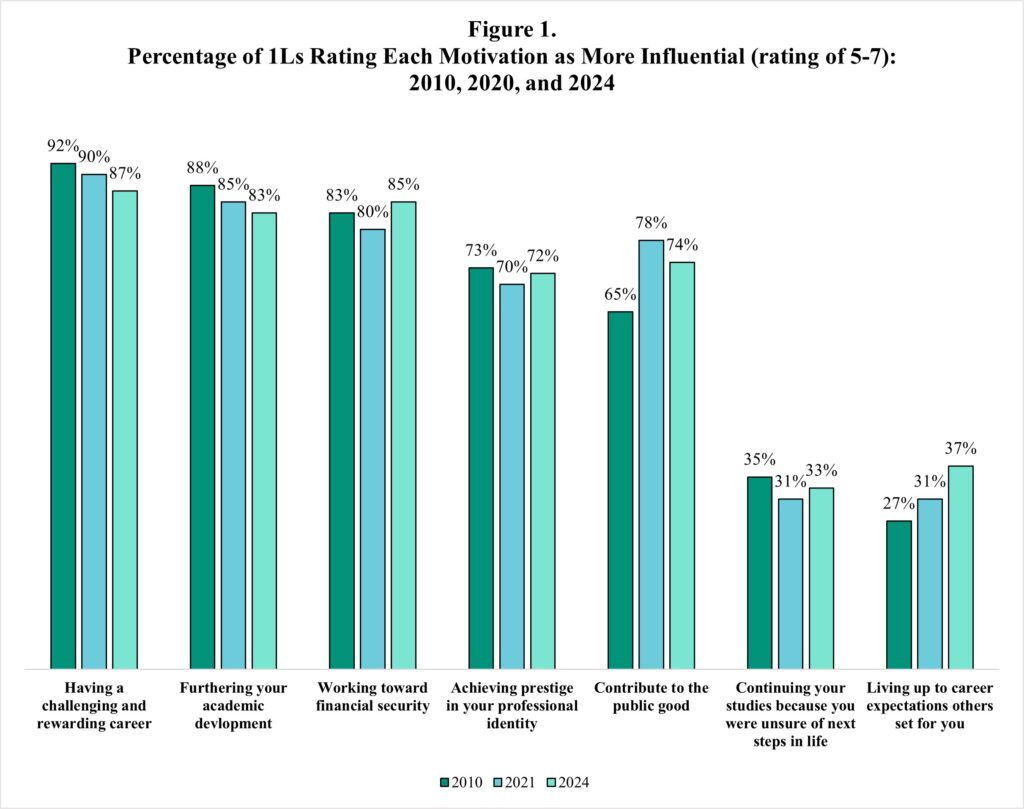 Perhaps the most striking general pattern is the relative stability in 1L motivations. With only small decreases over time in the degree of influence, the intrinsic motivations of a challenging career and academic development are the most intense motivations. They are followed by the extrinsic motivation of financial security, which stayed within a narrow range. A bit lower in intensity is the extrinsic motivation of prestige, that also stayed within a narrow range.
Perhaps the most striking general pattern is the relative stability in 1L motivations. With only small decreases over time in the degree of influence, the intrinsic motivations of a challenging career and academic development are the most intense motivations. They are followed by the extrinsic motivation of financial security, which stayed within a narrow range. A bit lower in intensity is the extrinsic motivation of prestige, that also stayed within a narrow range.
The extrinsic motivation of contributing to the public good is different, with a marked increase from 2010 to 2021 in its importance. The question for us is whether this was just a short-term disturbance. While there is a small decrease in 2024 (not unlike those for challenging career and academic development), the percentage does not return to the 2010 level. The importance of this is a focus of our ongoing analyses.
Perhaps we can say these five motivations make-up a relatively stable core (relative only because of the shifts for public good) for most students, one reflecting the mixture of motivations – intrinsic and extrinsic -- drawing students to law school. The remaining two motivations – unsure and others – are less important in comparison, but not unimportant. They are different in not having an identifiable substance as the others do and pose an interesting interpretative challenge.
Importantly, even at the individual-level students report a mixture of motivations – particular motivations are not necessarily mutually exclusive (again, each motivation was assessed independently). A simple correlation matrix using he 2024 data – which shows the relationships each of the motivations has with each of the other motivations – shows few relationships that are not significant.[5]
Not every law school appears in each annual LSSSE survey or in the motivation subsets, but one school did appear in each of the motivation subsets. Like the general pattern in Figure 1, it had a marked increase in the importance of the public good motivation between 2010 and 2021 (more influential going from 63% to 77%), with a slight decrease in 2024 (more influential 75%). A second school appeared in 2010 and 2024, with more influential at 66% in 2010 and at 73% in 2024. What we don’t know is whether some schools may be more attractive to those motivated by the public good and others less so.
The extent to which motivations and aspirations are connected is the focus of our ongoing work along with the ways law schools can support public service careers. While not all who are motivated by the public good will go into public service, it is still important to know if the interest in the public good follows students into other legal careers as well. Fostering this motivation should be a part of any idea of professional identity.
___
[1] Stephen Daniels and Shih-Chun Chien,” Beyond Enrollment: Why Motivations Matter to the Study of Legal Education and the Legal Profession?” LSSSE Guest Blog (Sept. 24, 2020); Stephen Daniels and Shih-Chun Chien, “Why Motivations Matter Revisited: More So Now” (Dec. 21, 2021).
[2] Shih-Chun Chien and Stephen Daniels, Who Wants to be a Prosecutor? And Why Care? Law Students’ Career Aspirations and Reform Prosecutors’ Goals, 65 HOWARD L.J. 173 (2021).
[3] While we are interested in public service generally, we have a special interest in the criminal justice system (e.g., as prosecutors and public defenders).
[4] The respective motivation subsets were not the same for each survey (2010, 2021, and 2024). Perhaps we can look at the subsets as a very rough form of sampling with replacement from a relatively small population.
[5] The relationship between public good and financial security is not significant as is the relationship between public good and unsure and public good and others’ expectations. Of course, not all relationships are strong or even positive.
An Indispensable Resource: The Law School Survey of Student Engagement at Twenty
 Lauren Robel
Lauren Robel
Van Nolan Professor of Law Emerita, Provost Emerita
Indiana University
Now in its twentieth year, the Law School Survey of Student Engagement (LSSSE) has become an indispensable resource for everyone who cares about legal education. Modeled on the National Survey of Student Engagement, which has been asking undergraduates about behavior that empirically correlates with good learning outcomes since 2000, LSSSE has for two decades provided individual schools and those interested in legal education with a wealth of empirical information and important insights about how law students navigate their educations. From a starting point of 42 law school participants, the annual survey over its lifetime has included over 425,000 students at more than 200 discrete institutions in the U.S., Canada, and Australia. LSSSE has accumulated a lot of data in two decades about how law students experience legal education and what schools are doing to help them thrive. Working from that unique and powerful dataset, LSSSE has flowered from a yearly snapshot of student behavior to an exceptional resource for understanding how law schools create and respond to change.
The power of this resource is a function of its unmatched longitudinal and comparative data. This annual report relies on that data to ask what twenty years of survey responses can tell us about what has stayed the same and what has changed in the years that the survey has been administered. There is much good news. Law students, like practicing lawyers, have been and remain overwhelmingly satisfied with their chosen vocational path.[1] Students continue to participate in experiential learning at high levels and large numbers of them take advantage of opportunities for public service and pro bono. More of them--- almost half---- believe that their law schools are doing a good job in preparing them to work with diverse constituencies than when LSSSE first began collecting data.

And the same is true of identity formation: more than half credit their schools with developing their professional identity. As these data document, law schools are doing many things right.

During its twenty years of collecting these data, LSSSE has remained staunchly committed to its founding mission of helping law schools improve learning by keeping the voices of students front and center. Its focus on how students learn predated the ABA’s adoption of learning outcome accreditation standards by ten years,[2] and it has helped law schools demonstrate that they are meeting the requirements of that standard. While providing deep analysis of single-school data on a specific topic, LSSSE also regularly steps back to analyze how schools can think holistically about their data. For instance, LSSSE has pulled together a set of responses that show how often students report engaging in the specific skills that, together, constitute “thinking like a lawyer.”[3] And it has cultivated partnerships to understand how behaviors in law school might be influenced to improve bar passage rates.[4] Law schools are also able to compare how their students are using their career and advising services, or their libraries, to students’ use at peer institutions, allowing them to benchmark and improve these critical services. All of these services are important to student success and are expensive to provide, putting a premium on ensuring that schools can rely on their responsiveness and efficacy. For individual schools, LSSSE is an invaluable tool for ensuring the quality and efficacy of the school’s work.
While all of this has helped individual schools, LSSSE has done much more. It has responded to important new questions driven by the evolving literature on law schools or experiments that law schools themselves want to explore. For instance, schools took seriously the questions arising from the Carnegie Foundation’s important report on law school professional identity formation,[5] and LSSSE helped them understand how the programming they instituted affected their students’ understanding of their nascent professional selves. Similarly, law schools have expanded their experiential offerings tremendously during the twenty years of LSSSE administration. Schools interested in ensuring the effectiveness of new graduation requirements, such as pro bono or clinical course requirements, can use LSSSE to follow changes over time and adjust where necessary. Institutions interested in how law schools have responded to criticism can look to LSSSE for empirical answers. LSSSE provides a way to stand both inside and outside a single school, allowing deans, faculty, staff, and constituencies interested in the profession to determine whether innovation is having the hoped-for effects on students’ development as professionals.
The annual reports have also thoughtfully explored the effect of major cultural and social events and trends, like the pandemic and the interest in online courses it triggered, on legal education.[6] They have explored difficult and intractable issues, such as student debt levels.[7] And under Professor Meera Deo’s thoughtful leadership, LSSSE has been especially attentive to exploring how diverse students experience law school.[8] One of the great success stories of the past twenty years has been the increased diversity of the student bodies of schools across the country, which LSSSE has documented and which may be imperiled by the Supreme Court’s dismantling of affirmative action. Increasing the presence of diverse students carries with it the imperative of ensuring that their path to success does not face unintended barriers. As Dean Jelani Jefferson Exum explained, “LSSSE data has been extremely useful in illuminating the culture of law schools,” and permitting schools to stay true to their missions for all of their students.[9]
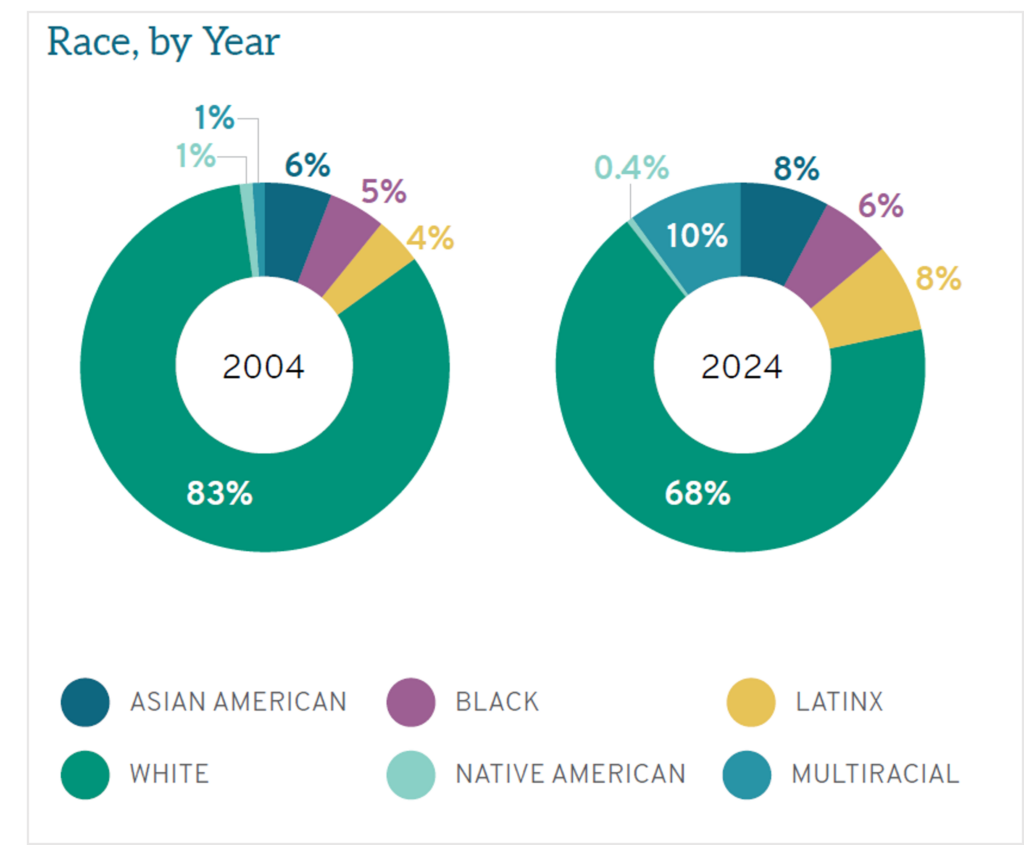
In addition to its own stellar work with the data, LSSSE has also supported an impressive and deepening array of research and scholarship (at last count, close to 150 articles, books, and doctoral dissertations) that looks to this data set to answer questions about legal education, student engagement and success, diverse students’ experiences, and comparisons to other professions.[10] LSSSE has become an important resource for scholars as well as schools.
What makes LSSSE’s work critically important, of course, is the importance of the work for which we are preparing our students. Our country endows lawyers with a great deal of power and responsibility, both for their clients’ lives and for the health of the rule of law. The more we know about how students are forming their skills, judgment, and ethics, the better we can perform the crucial task of preparing them for a virtuous practice that supports the highest values of the profession. For twenty years, LSSSE has made succeeding at this task more possible. Congratulations to LSSSE and the Indiana University Center for Postsecondary Research for their important and growing contributions to the success of our students.
___
[1] See R. Nelson et al., THE MAKING OF LAWYERS’ CAREERS: INEQUALITY AND OPPORTUNITY IN THE AMERICAN LEGAL PROFESSION (2023), reporting on a twenty-year longitudinal study of practicing lawyers that found lawyers overwhelmingly satisfied with their decision to become a lawyer.
[2] Stephen C. Bahls, Adoption of Student Learning Outcomes: Lessons for Systemic Change in Legal Education, 67 Journal of Legal Educ. 376 (2018) (Chair of ABA’s Student Learning Outcomes Committee discussing process that led to adoption of ABA Standard 302 in 2014).
[3] Jak Petzold, Learning to Think Like A Lawyer, (August 7, 2024) at https://lssse.indiana.edu/blog/learning-to-think-like-a-lawyer/
[4] AccessLex Institute/LSSSE Bar Exam Success Initiative at https://lssse.indiana.edu/accesslexlssse-bar-exam-success-initiative/
[5] William Sullivan, Jr., et al., EDUCATING LAWYERS: PREPARATION FOR THE PROFESSION OF LAW (2007) (part of the Carnegie Foundation for the Advancement of Teaching’s “Preparation for the Professions” series0.
[6] 2021 Annual Report, The COVID Crisis in Legal Education; http://lssse.indiana.edu/wp-content/uploads/2015/12/COVID-Crisis-in-Legal-Education-Final-1.24.22.pdf 2022 Annual Report, Success with Online Education, https://lssse.indiana.edu/wp-content/uploads/2022/10/Success-with-Online-Education-Final-10.26.22.pdf
[7] 2015 Annual Report, How a Decade of Debt Changed the Law School Experience at http://lssse.indiana.edu/wp-content/uploads/2016/01/LSSSE-Annual-Report-2015-Update-FINAL-revised-web.pdf
[8] See Diversity and Exclusion, LSSSE Annual Report 2020 at http://lssse.indiana.edu/wp-content/uploads/2020/09/Diversity-and-Exclusion-Final-9.29.20.pdf The Cost of Women’s Success, LSSSE Annual Report 2019 at http://lssse.indiana.edu/wp-content/uploads/2015/12/LSSSE-AnnualSurvey-Gender-Final.pdf
[9] Jelani Jefferson Exum, The Role of Data in Mission Focused Law School Leadership (Sept. 20, 2024) at https://lssse.indiana.edu/blog/the-role-of-data-in-mission-focused-law-school-leadership/
[10] See Publications citing LSSSE Research at https://lssse.indiana.edu/scholarship/
The Parenting Penalty for Law Students
 Laila L. Harris
Laila L. Harris
Associate Professor of Law & Co-Director of the Immigrant Rights Clinic
Associate Provost of International Affairs
Tulane University Law School
This fall, the U.S. Surgeon General issued an advisory on the mental health and well-being of parents, responding to levels of high stress parents report and the harmful effects on their own mental health, as well as their children’s. This was on the heels of findings from a national study that a majority of parents experience isolation, loneliness and burnout related to parenting. For those of us at law schools, often recognized as high stress environments already, it raises the question: what is the landscape for parents in law schools?
Professor Lindsay M. Harris (University of San Francisco Law School) and I have begun talking and writing about “the parenting professor penalty,” the panoply of harms and challenges that pregnant and parenting people, as well as those who are presumed to become pregnant or parenting, face in entering and being successful as faculty within the legal academy. We are bringing this topic to the annual AALS meeting, focused on “Courage in Action” held in January as a discussion group session and welcome you to join us. Yet faculty often comprise those with the most privileged positions in law schools, relative to staff and students. Law students who are parents, or more broadly caretakers, may face steep challenges and inequities related to their status and circumstances.
Mental health has long been a concern in law schools and the legal profession. According to LSSSE, around 60% of law students experience very high law-school related stress or anxiety. Law students who also serve as caretakers are particularly likely to have more stress. This is especially true because students with dependents also spend more time on commuting to class and working, and less time on exercising and socializing, which may help combating anxiety and isolation.

While about one-third of law students reported spending time caring for dependents, the burden of hours spent every week is particularly high for non-traditional law students. First-gen students comprise a larger portion of law student caretakers: 44% of first-gen students spend time caring for dependents, compared to 33% of non-first-gen students.

Caretakers are also over-represented in part-time law programs, with 56% of part-time students reporting caretaking for dependents. Time spent caretaking per week is highest for older law students, as 40% of those aged 31-40 spent 11 or more hours per week caretaking, and nearly half of those aged over 40 spent 11 or more hours caring for dependents.
Given these genuine concerns for law student caregivers, how can we as law faculty respond individually and collectively, and how can we respond institutionally as law schools?
As individual actors, law professors should think about how to account for the stresses parenting law students may be facing. Professor Harris and Professor Mallika Kaur recently released a co-edited volume titled How to Account for Trauma and Emotions in Law Teaching, which is instructive and helps to mainstream conversations about stress and well-being within law schools. Professors may, for example, want to think about whether they want to model “parenting loudly,” though this is not without varying consequences depending on an individual professor’s positionality, as Professor Meera E. Deo documents in her book Unequal Profession: Race and Gender in Legal Academia.
How can law schools as institutions respond to the special needs of law students who are caretakers and are at risk of heightened stress and burnout? As part of the ABA mandate that law schools provide substantial opportunities to explore “well-being practices,” law schools should offer meaningful courses and co-curricular activities to address law students’ well-being, including trainings, screenings, and policies to encourage work-life balance. These co-curricular programs should also have resources to address the particular needs of law students who are parents or caretakers. Some institutions do this already. For example, some schools have created a clearinghouse of information directing students to school and city-specific parenting resources, as well as child care subsidies and student groups.
Schools should also conduct internal assessments to learn about the experiences and needs of law students who are caregivers to consider whether policies and practices around leaves and broader resources for this community are responsive to needs. Creative responses including creating parenting support groups are warranted. Schools can also take steps to accommodate the schedules for working parents. For example, one law school designated one of the nine first year small section modules as the parent module (affectionately called the “mommy mod”) and classes were scheduled to align with times when school was open and to accommodate drop off and pick up responsibilities. Similarly, another school designed a part-time law program so law students with school age children take coursework while their children are in school. Finally, as a broader measure and perhaps an impetus for the cultural shift the moment demands, U.S. law schools should consider signing on to the International Guidelines for Wellbeing in Legal Education, which would require a comprehensive overhaul of law school structure, curriculum, and atmosphere with well-being in mind.
Law Student Online Engagement and Universal Socratic
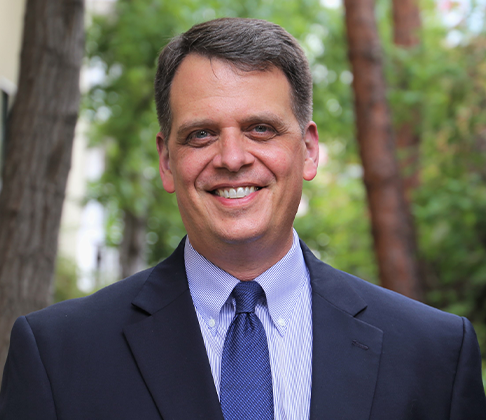 Law Student Online Engagement and Universal Socratic
Law Student Online Engagement and Universal Socratic
Christopher J. Robinette[1]
Professor of Law, Southwestern Law School
In the fall of 2023, Southwestern Law School received ABA approval to operate the country’s first fully online Juris Doctor program. Moreover, to increase student flexibility, the program is asynchronous, with only a few voluntary synchronous sessions. In essence, the students and professor will not be online together in a Zoom room, but students will access videos of the professor and exercises on their own schedules.
As a law professor who has taught in-person courses for over twenty years, I deliberated a long time before volunteering to teach online. I love the energy of the face-to-face classroom and, frankly, I was somewhat skeptical about the efficacy of online law classes, particularly in the first year. In fact, one of the most compelling reasons that I agreed to teach online was the hope of improving my pedagogy in the “real” classroom. As I began planning my online course, however, I became excited about the possibilities particular to the online mode.
The 2022 LSSSE Annual Report, Success with Online Education, says half (50%) of all law students were enrolled in at least one course that was taught mostly or entirely online and every law school participating in the LSSSE survey offered at least some online courses. Most law students (70%) took courses that met in-person, though 10% took mostly online courses, and 20% reported that they had enrolled in a mix of courses that met online and in-person. Of those who did meet online, most (78%) were in synchronous classes; but 3% of LSSSE respondents in online courses met asynchronously and an additional 19% were in hybrid courses. Clearly, online education is here to stay and could grow even more prominent in the years ahead.

As an instructor, my biggest concern about teaching online was something about which LSSSE is expert: engagement. Keeping students engaged can be difficult under any circumstances, but it is especially challenging online. I believe a solution to the online engagement problem is not singular; instead, it lies in numerous program and instructional design decisions. With that in mind, I considered how law professors engage their students, particularly first years, in the traditional classroom. Of course, a major technique is the Socratic method, in which the professor asks a (usually cold-called) student increasingly challenging questions about a case. This is an interactive mode of teaching and learning that involves the students and does not conceive of them as passive recipients of knowledge. Although they exist, I do not need the overwhelming data telling me that active learning is superior. I can sense it in the fact that the air starts to go out of the room whenever I lecture my students for lengthy periods of time.
Was there a way to adapt the Socratic method to the online asynchronous environment? In thinking about this, I had to admit that one facet of the Socratic method in the classroom was not replicable. In the traditional classroom, the professor is able to tailor her follow-up questions precisely to the student’s answers. This is not possible in an asynchronous online class. But—and this is where I grasped that the online environment has advantages—you can ask all of the students all of the questions. In the traditional classroom, one student is on call. Ideally, we expect the other students to be following along and answering the questions silently for themselves. In reality, we know that at least some of them do not. They are spaced out, or shopping online, or simply exhausted. In an online course, all students can be engaged. And it can be verified.
This is how I developed the Universal Socratic for my online course. For each module in my course, I selected one case that I found significant and created an interactive exercise around that case. I wrote five questions about the case. For the first few modules, I followed the structure of a basic case brief (facts, issue, holding, disposition, rationale), allowing the students to reinforce their briefing skills. As the modules progressed, I formulated more questions in the upper ranges of Bloom’s Taxonomy (analyzing, evaluating, and creating). Thanks to exercises like this, LSSSE data indicate that students believe legal education contributes to multiple skills, especially thinking critically and analytically, as much online as in-person.

I then drafted answers to the questions. Using Canvas’s Quizzes feature, I inserted the questions and required the students to answer them one at a time. After the student has answered each question, and before they answer the next question, they are shown my answer and are able to compare it to theirs. Not only asking the questions but providing prompt feedback is helpful to engage students. Using this process, the student and I are essentially having a dialogue, even though I do not have the benefit of their exact answer in real time in person. Moreover, every student in the class engages in the exercise of answering the questions.
Given the growth in online education, students will benefit from legal educators modifying effective face-to-face techniques, like the Socratic method, for the asynchronous online mode. When educators do so, they will find that some features of online education make it better than the original.
[1] I benefited greatly on this project from the ideas of my terrific colleagues Catherine Carpenter, John De Sousa, and Danni Hart.
The Role of Data in Mission-Focused Law School Leadership
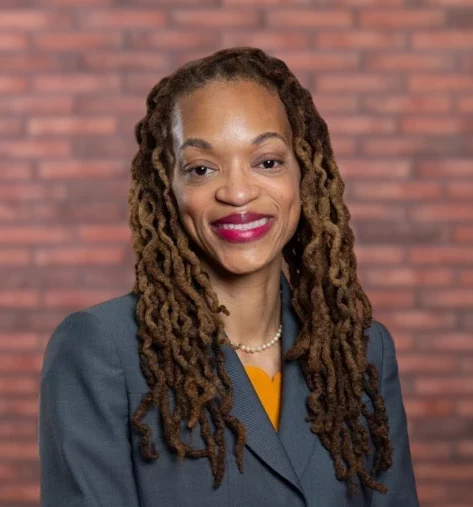
The Role of Data in Mission-Focused Law School Leadership
Jelani Jefferson Exum
Dean & Rose DiMartino and Karen Sue Smith Professor of Law
St. John’s University School of Law
I am a mission-focused leader. Of course, many law school deans would describe themselves in the same manner. Every law school has a mission that identifies and guides the institution. Most law deans were drawn to law school leadership because we believe in the transformative power of legal education, but also because we believe in the mission of our institution. That is my story. As the new Dean of St. John’s University School of Law, I am inspired and guided by the mission of the law school. The mission of St. John’s Law focuses on providing access to an excellent legal education for a diverse student body; teaching and scholarly innovation; building an antiracist community; inspiring civic engagement; and developing leaders. I realize that in order to lead the law school in a manner that stays true to this mission, I need to have an in-depth and nuanced understanding of our student body and their experiences. The data provided by LSSSE are a powerful tool for any law dean – especially one new to an institution – to learn about their student population and the broader legal education landscape. That data, in turn, can assist a dean in supporting the mission of the school.
There may have been a time in legal education when staying true to mission was an easy task. That certainly is not the case in today’s educational and legal climate. For instance, for nearly 100 years, St. John’s Law has opened its doors to a diverse student body – many of whom were first generation college or law school students – and provided them with access to a legal education that would transform their economic mobility. This focus on making legal education more accessible to a diverse group of students, which has been a hallmark of St. John’s Law, is increasingly challenging. The recent constraints placed on admissions by the Supreme Court means that fulfilling this diversity mission priority requires more intentional work on the part of law school deans and their admissions teams. LSSEE’s longitudinal data, such as that provided in The Changing Landscape of Legal Education, provides important information on the shifts in the demographics and needs of law students over the years.
The data summaries are very detailed and break out certain results based on students’ race, gender, sexual orientation, and age. These statistics can aid in understanding the evolving expectations of students in ways that can also inform methods of communicating your school’s value and strengths to a diverse body of prospective students.
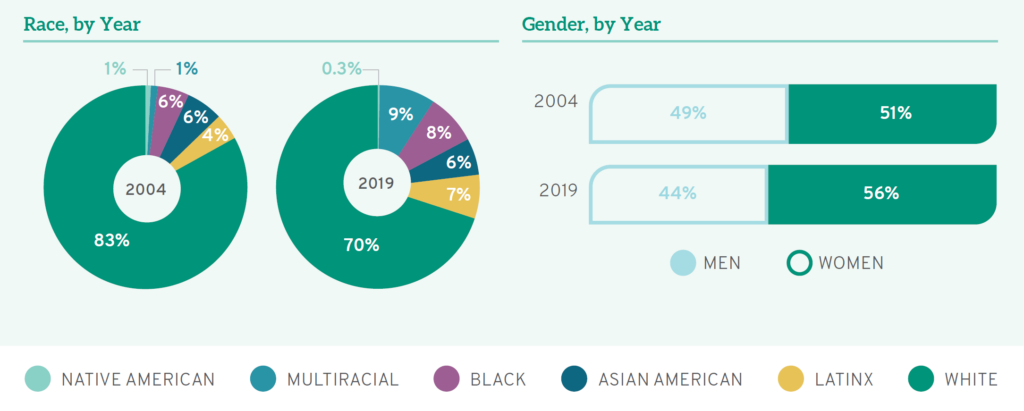
Understanding a diverse student body is not only important in maintaining a mission of access, it is also vital to schools that are working to stay true to an antiracism mission. LSSSE data has been extremely useful in illuminating the culture of law schools. Specifically, the 2020 Annual Report, Diversity & Exclusion, provides in-depth information on a variety of topics that give insight into the student experience, from institutional support, to belonging, to diversity skills.


Before I became dean, St. John’s Law used this report, in addition to other school-specific data, to inform the development of its annual Anti-Racism Day programming for 1L students. Now that I have joined as dean, this type of LSSSE data has helped me to think through, not only admissions challenges, but various aspects of our school where the effects of institutional racism can be investigated and addressed – from assessments to student services to teaching strategies. This information also helps us to measure the success of our commitment to an innovative application of knowledge. We will continue to use LSSSE reports as an indirect measures of student success and competence in our learning outcomes. LSSSE survey results give us a mechanism to learn what students think about their learning and experience in law school to use in concert with our more direct assessment measures. In this way, LSSSE data are valuable across mission goals, tying together the points relevant to antiracism, student learning, and overall student success and well-being.
Today’s law school has more need than ever to draw upon its mission statement to chart a path forward. There are many pressures and changes in legal education that make it easy for a school to lose its way. From addressing issues of free speech and academic freedom in light of concerns regarding student inclusion and belonging to navigating how to embrace and champion diversity and access within new legal limits --a law school can easily veer off target and lose its foundational values. LSSSE and the data it so thoughtfully collects and disseminates can be a powerful tool in staying the course for a mission-focused leader.
Improve the Diversity of the Profession By Addressing the Costs of Becoming a Lawyer

Improve the Diversity of the Profession By Addressing the Costs of Becoming a Lawyer
Joan Howarth
Professor Emerita, Boyd School of Law, UNLV
Dean Emerita, Michigan State University College of Law
One of the themes of my book, Shaping the Bar: The Future of Attorney Licensing (Stanford University Press 2023), is that becoming a lawyer in the United States is too expensive. Unlike in many other countries, the U.S. law degree typically requires three or four years of expensive postgraduate study, which should be enough time to produce and assess minimum competence to practice law. But after graduating from law school bar candidates typically spend two more months and thousands of dollars immersed in bar prep with a commercial company. The billion-dollar bar prep industry covers the gap between what was learned in law school and what is required to pass a bar exam. Student loans do not cover the cost of those bar prep courses or the living expenses while preparing for the exam. Law graduates without financial resources face financial emergencies – or time-consuming jobs for paychecks -- when they are supposed to be using all their time preparing for the bar exam.
Not surprisingly, then, research shows that economic assets are a significant factor in bar passage. And LSSSE research shows us the connections between the excessive expense of becoming a lawyer and the persistent racial and ethnic disparities in bar passage rate.
The racial and ethnic bar passage disparities are extreme. For example, the national ABA statistics for first time passers in 2023-24 show White candidates passing at 83%, compared to Black candidates (57%) with Asians and Hispanics in the middle (75% and 69%, respectively).
These disturbing figures are very related to the expense of becoming a lawyer.
The 2021 National Report of Findings for the AccessLex/LSSSE Bar Exam Success Initiative showed that law grads who take care of children or work in non-law jobs have a harder time passing bar exams.

These problems were confirmed in a large 2021 study of New York bar takers. Even after controlling for LSAT and other academic factors, law grads who had greater financial resources were significantly more likely to pass but grads who worked for pay were significantly less likely to pass.
Who are the law grads with fewer financial resources? LSSSE research shows us that Black and Latinx students are carrying more law school debt than White students.
LSSSE’s 2023 Annual Report focused on first-gen law students shows that law students who are the first in their families to graduate from college are more likely to be from underrepresented communities.

First-gen students are also more likely to work for money and work in non-law related jobs in law school.

LSSSE data from that report show that first-gen law students are also more likely to care for dependents.
In other words, law graduates who could be great lawyers—too many of whom are people of color, first-generation law students, and parents—are failing bar exams because they cannot drop everything else for two months to devote themselves to memorizing thousands of rules, most of which they would not use in practicing law, and most of which they will forget quickly after walking out of the exam.
Finally, though, after decades of stability -- or stagnation -- in attorney licensing, change is here. And some of the changes, such as the new pathway to licensure in Oregon based on supervised practice instead of a traditional bar exam, or the Nevada Plan in which most of the requirements can be satisfied during law school, should significantly decrease the costs of licensure and add flexibility for candidates with responsibilities beyond studying for a bar exam. These reforms are long overdue.
Closing the Information Gap for Law Students Interested in Public Interest Careers
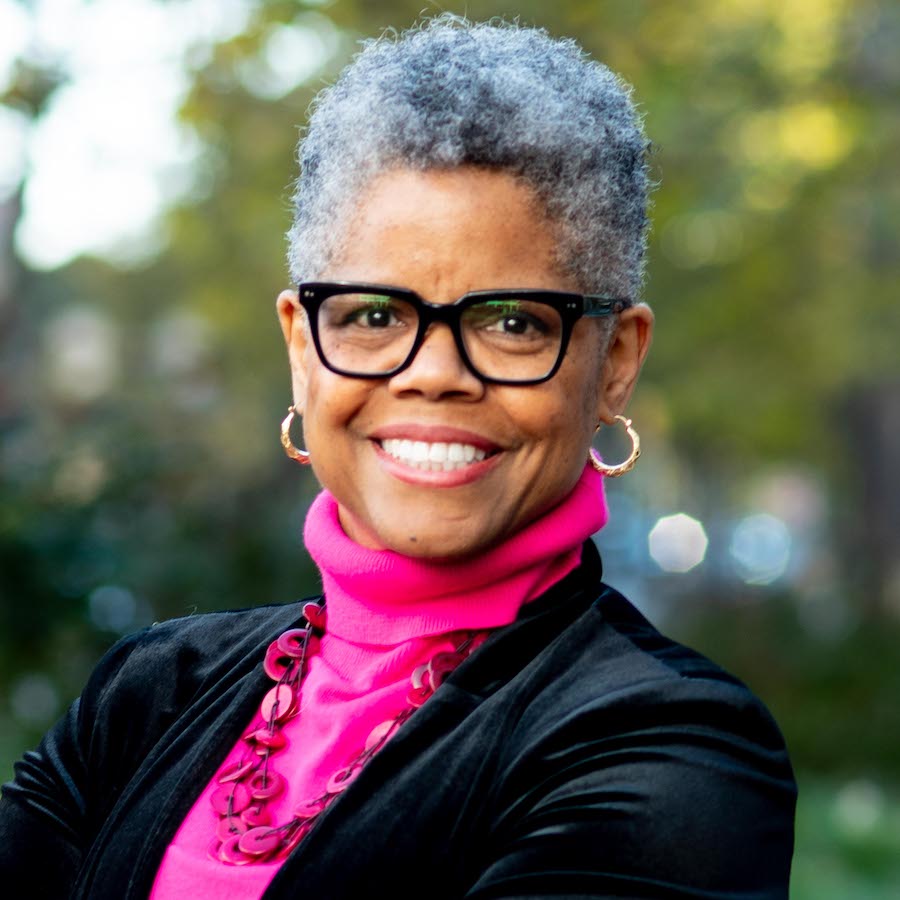
Verna L. Williams
CEO
Equal Justice Works
Our nation is experiencing an access to justice crisis. According to the Legal Service Corporation, 92% of low-income people’s civil legal needs went unmet in 2022, leaving a massive gap in our justice system. What’s more, the number of lawyers focusing on underserved populations is very small. According to the American Bar Association, fewer than one percent of lawyers are paid legal aid attorneys. As law schools plan for the coming academic year, I urge them to consider how to address this untenable gap in our legal system.
Put simply, creating lasting change for communities and in our justice system requires more graduates to choose public interest law. The fact that so few law graduates pursue this route is not only problematic, but also puzzling. As a law school dean, I saw first-hand that many aspiring attorneys chose legal education because they wanted to serve the public. In my new position as CEO of Equal Justice Works, a nonprofit that connects law students, law school professionals, lawyers, and advocates with fellowships at legal services organizations and other opportunities in public interest law, we are tackling this problem head on.
Consider student loan debt. AccessLex reports that, on average, law students borrowed $157,300 last year. Students of color graduate with an average educational debt twice the amount of their white classmates. With entry-level public interest attorneys earning a median $63,200, compared to $200,000 for law firm associates, it’s hardly surprising that so many graduates would choose private practice.
What else explains the dearth of public interest attorneys? To answer that question, Equal Justice Works partnered with the Law School Survey of Student Engagement (LSSSE), an invaluable resource, to identify blind spots in supporting future public interest lawyers. Working with LSSSE, we crafted questions for the 2023 LSSSE Survey to help quantify just how accessible information about pursuing public interest law is for law students across surveyed law schools.
The results illustrate that many opportunities exist for legal education to build or strengthen support for new public interest lawyers. Among the findings:
- Only 44% of participating schools provide funding for public interest internships.
- An even smaller percentage of schools, 38%, employ public interest career advisors.
- Just 19% of law schools have a dedicated public interest office.
- When asked whether their school provided education and exposure to tools like Public Service Loan Forgiveness (PSLF), the answer was a disheartening 21% responded in the affirmative.


The result is a knowledge gap about how to make the most of existing resources that can make pursuing public interest feel less like fantasy and more of a reality.
The LSSSE survey results strike a chord in me. Like today’s students, I chose law school because I wanted to make a difference. But before I began my public interest journey, I practiced in BigLaw to get my financial house in order—when I graduated, loan repayment assistance plans were brand new. I was able to get settled with my associate’s salary, paid off some debt, and never looked back.
My debt was considerably less than that of today’s student – but no less frightening. I wouldn’t trade my trajectory for anything, having had the privilege of practicing at the Department of Justice and the National Women’s Law Center. I built on those experiences as a faculty member at the University of Cincinnati College of Law (UC), in part, to create and support the next generation of feminist legal advocates. As a faculty member, I co-founded and co-directed the Nathaniel Jones Center for Race, Gender, and Social Justice, through which we created a clinic, advised students seeking public interest fellowships, and put on programs about how to “make a difference while making a buck.” Serving as dean of the law school allowed me to facilitate other efforts to make public interest opportunities available to students. I’m especially proud of the partnership we engaged in with Hamilton County Municipal Court to create the Help Center, which provided assistance to unrepresented litigants. Staffed by a UC attorney, the Help Center engaged students and volunteer lawyers who together have served tens of thousands of people.
Now, at the helm of Equal Justice Works, my colleagues and I continue the longstanding work of building a movement of public interest leaders who are transforming the communities we live in, come from, and partner with. But we can’t do it alone.
These survey results remind us we have a long way to go. But we are in this for the long haul. Partnerships with law schools are a key part of our strategy. We support member law schools, the majority of accredited institutions in the nation, in myriad ways —from educating law school professionals through webinars and other informational resources or introducing thousands of students to the field in the nation’s largest public interest career fair, to preparing them for such careers through summer fellowships and our Public Interest Primer. In addition to those resources, our law school engagement and advocacy team travels the country, visiting member schools to meet with students and share information about our programs and opportunities. Through these efforts and more, Equal Justice Works seeks to fill in the gaps about public interest law for students. Thanks to the LSSSE survey, we have important information to help amplify our efforts.
When millions of people in the United States cannot access legal assistance to avoid eviction, maintain custody of their children, or escape an abusive partner, we need an all-hands-on deck solution. Every part of the legal profession must focus on this crisis. Law schools must continue to institutionalize their commitment to pro bono work and public service. By continuing to work together, we can empower this next generation of advocates to be ready to direct their passion for impact where it’s most necessary.
Deciding to go to Law School: Affording Undergraduates Insights on the Reality of Law School
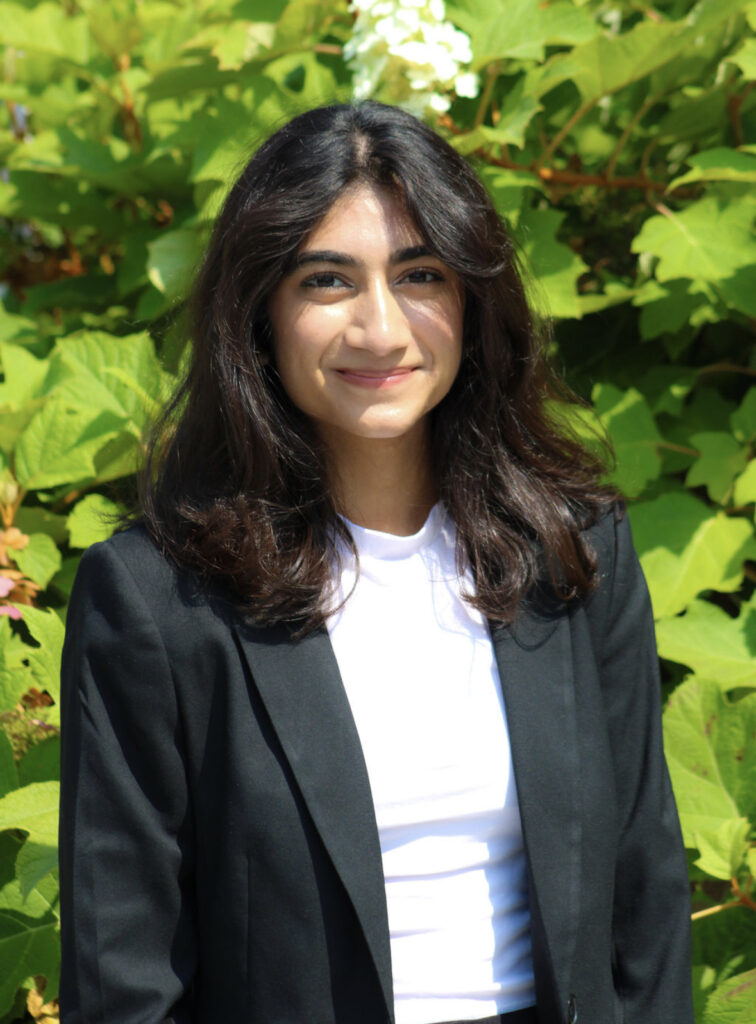
Leena Hussain
Indiana University: Class of 2025
B.A. International Law and Institutions
Choosing to go to law school is a weighty decision for a number of reasons. There are financial concerns, concerns about success and interest, and ambiguity about the experience itself. As an undergraduate looking to go to law school, these worries weigh heavy on my mind. Like many, I often wonder what law school is like. What does lecture look like? How hard are classes and grading? How much reading is there really?
These contemplations require unique insights that may not come easily. Information for post graduate education can be hard to obtain if one does not know who to ask and where to look. How do we give undergraduates the opportunity to see, firsthand, the reality of law school? Hamilton Lugar School of Global and International Studies and the Maurer School of Law have partnered to grant pre-law students just this. In a class called Espionage and International Law, I sit with undergraduates and law students to study the legality of espionage globally. The class was created to provide a comprehensive experience with the rigor, cold calling, and grading that one often sees in law classes.
Undergraduates should be granted the opportunity to deeply explore the reality of law school. Getting these insights provide students the tools to prepare financially and mentally. Moreover, early insight will lead to more successful law students. The better prepared prospective students are, the better they will do in law school, resulting in stronger lawyers in the field.
There may be large disparities in knowing where to look. The 2020 LSSSE report notes only a small increase in the demographic changes of minorities within law schools. Black, Asian, and Latinx groups saw their numbers go up only a few percent since 2004. While this is commendable growth, it can be better. Perhaps if these groups had more resources and insights on the law school experience, there would be more of these students in the field.

Classes like my espionage one are not the only way pre-law students can get exposure. Many law schools provide detailed overviews of what to expect in law classes. Penn State’s Pre-Law Advising website, for example, provides resources that detail lecture methods, the curriculum, exams, and grading. Undergraduates can also look for pre-law advisors or law professionals on their campuses for insights. These mentors can walk students through the admissions process as well as give advice for classes. Moreover, students can gain insights on the law through working at firms. JD Advising notes that working before going to law school familiarizes students to the legal world by giving them exposure to legal jargon, processes, and networks.
The groundwork exists, but there is still work to do in enabling all pre-law students to gain exposure to law school. Universities across the country can offer classes like my espionage class, develop stronger pre-law advising programs, and create comprehensive resources with insider information. While it is understandable to keep the field competitive, failing to address the hurdles that undergraduates may face in exploring law school is not. The decision to go law school is weighty, however, we can lighten the load by opening the experience.




